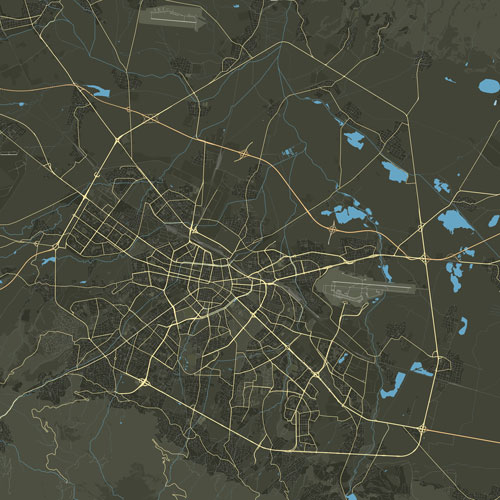It is located in Southeastern Bulgaria and is one of the constituent municipalities of Burgas Region . It borders the following municipalities: to the north – with Rouen, to the west – with Karnobat, to the south and southeast – with Burgas and to the east – with Pomorie. It covers the southern slopes of the Eastern Stara Planina and the valley of the Aitoska River. With an area of 402,866 km 2, it occupies 5.2% of the territory of the district. It includes the city of Aytos and 16 settlements with a total population of 36,000 people. The city is located 370 km. from Sofia and 29 km from the regional city of Burgas.
The terrain is mostly flat. The northern parts of the municipality along its entire length are occupied by the southern branches of the low (up to 700 m) Aitoska mountain. The only artificially created park “Slaveeva Reka” is located in Aytos. According to a project of the Municipality of Aytos, in 2018 BGN 1.6 million were invested in the park for the construction of recreation and sports areas.
The park is home to the Ethnographic Complex “Genger” – the Alley of Old Crafts, which has preserved the traditional Aito styles in the architecture, knowledge and lifestyle of the old town. The complex has a hotel base, a tavern and a cafe serving the guests.
The Three Brothers Rock Phenomenon is located in the “Kazanite” area, in the “Slaveeva Reka” park, at an altitude of 200 m above sea level. The natural landmark is one of the symbols of Aitos – a unique rock formation resembling three giants. This is a group of rocks in the form of human figures that rise in the town of “Kazanite” 300 m east of Aytos. Many legends have been created about this natural landmark.
In one of them, it is said that these are three brothers, defenders of the “Aetos” fortress and defenders of the oppressed. The three brothers possessed extraordinary strength, and fought many heroic battles in the surrounding area. The rocks they were walking on bent under their heavy Kingmark steps and left huge depressions – wide and deep as they say. That is why the locality got the name “Kazanite”.
In the evening, the Three Brothers went home to rest after the hard day’s fighting. To hide from their attackers, they turned into three blue rocks. In peacetime, when there was no threat to the city, they “retired” to the rock. From ancient times to today, towering their huge rock bodies over the city, although petrified, the brothers continue to watch over its peace and tranquility.
By order No. 1799 /30.06. 1972
of the Ministry of Forestry and Protection of the Natural Environment, the “Three Brothers” rock phenomenon was declared a natural landmark of interest for science and the development of tourism (SG No. 59, 1972) . The territory has been identified as a potential Natura 2000 area and part of the European ecological network.
The natural landmark “The Three Brothers” is included in the potential protected areas under the Habitats Directive in the Republic of Bulgaria under No. 90 /BG 0000119/, together with the adjacent territory of 1047.0 ha.
The landscape in the area around the “Three Brothers” reminiscent of a stony desert. Here grows Aitoskiat wedge – genter, also known as Astracantha aitosensis and “prickly gorse”. A low, spiny, tuffaceous shrub, with 4-meter powerful roots. Bulgarian endemic. Now the species is included in the list of endangered plants in Bulgaria. The areas of the Three Brothers and the Kazanites around the town of Aytos , where is the only natural site of the genger, were declared a natural landmark in 1972. The Aytos wedge is included in the European list of rare, protected and endemic plants of the rare category.
Two scenic eco-paths start from the “Three Brothers”:
I. ECOPATH: “The Three Brothers”, on the right, following a red marking, you get to the “Eagle” – a bronze statue, a symbol of the city of Aitos / the ancient name of Aitos is AETOS, translated from Greek, means “eagle”/. We return to the northeast back along the marking – to the natural landmark “Kazanite”. The eco trail continues through the Motopista – the springs of “Slaveeva Reka” – “The Goat” – “Tourist fountain” – “Zoopark” – Aytos – “Slaveeva Reka” park.
II. ECOPATH: “The Three Brothers”, direction east – Aitoska koria – Sadievsko ayazmo – Sadievo village.
In connection with the perpetuation of the natural landmark “The Three Brothers”, a monument was erected – a sculptural composition “The Three Brothers” – an entrance sign to the city of Aitos.
Work time:
without a day off 8.00-18.00
Contacts:
Phone: 0885620830, 0885620876

